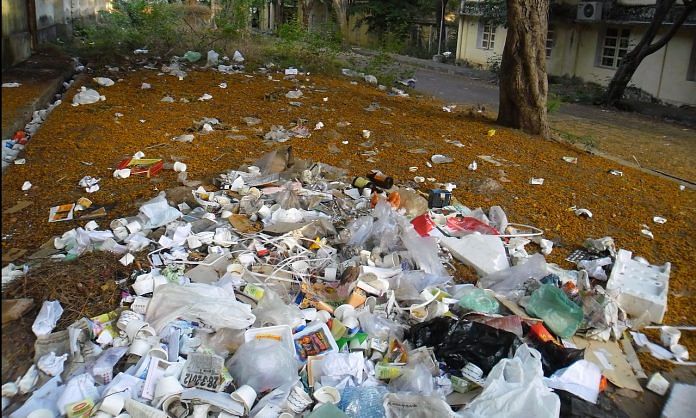The need of the hour is to put serious efforts to revive the jute industry and make jute products feasible alternative to plastics for the common man.
As India hosts the World Environment Day Tuesday, it becomes imperative for us to think beyond the social media activism and figure out an actual solution to our plastic problem.
The size of our plastic industry is around Rs 1.1 lakh crore. The average per capita consumption of plastic in India is about 11 kg, which is expected to go up to 20 kg by 2022, according to estimates by the ministry of petroleum and natural gas.
Worse, out of the nine million tonnes of plastic waste generated per year, only 60 per cent is being recycled.
It’s the households that generate the maximum plastic waste, and 43 per cent of manufactured plastics are used for packaging purposes — most are non-recyclable.
While waste management needs to be looked into with more seriousness, an easy solution to cut down our plastic consumption lies in our own backyard — increase use of jute products.
Jute is grown all over the Ganga-Brahmaputra delta region in the country. India’s jute industry has grown exponentially over the years and produces around 1.96 million tonnes of jute annually.
The government has stressed the need to boost jute production and diversify jute products. While addressing the members of the Merchants’ Chamber of Commerce in Kolkata on 31 May, union textiles minister Smriti Irani said India has the capability of becoming the largest exporter of jute in the diversified sections.
The eco-friendly qualities of jute, also known as ‘golden fibre’, make it the perfect solution to our plastic crisis. But in order to make this possible, we need to strengthen our jute industries.
Despite huge export potential, the declining domestic use of jute, coupled with systemic problems such as dearth of skilled labour and capital, the industry has suffered a lot. In 2015-16, the compounded annual growth rate (CAGR) of the jute industry for last 10 years was less than 0.1 per cent.
The need of the hour is to put serious efforts to revive the industry and make jute a feasible product for the common man. Simply banning plastic or polythene has not yielded results. If we can provide a solid alternative to the public, only then can we hope to tackle the plastic problem.



